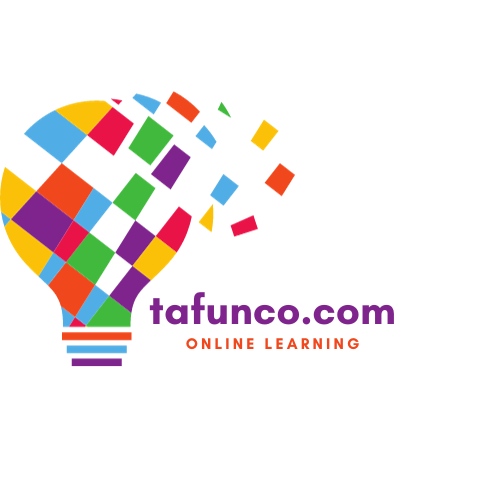In recent times, there has been a notable shift in the educational environment, with online education becoming a major factor. Online learning is becoming more and more popular, but there are a lot of myths and misunderstandings about it that might prevent it from being used effectively. In order to dispel some of the many misconceptions about online learning and to emphasize the advantages of this cutting-edge method of instruction, we shall clarify the facts in this piece.

studying online is less successful than studying in a regular classroom.
Reality: A plethora of research has shown that virtual learning can be as bit as successful as conventional classroom instruction, if not more so. The way the courses are taught and designed is crucial. Online courses that are well-designed and have interesting material, interactive components, and teamwork possibilities may improve student learning. Online learning also enables customized instruction that accommodates a range of learning velocities and styles.
Employers do not recognize online courses because they lack credibility.
Reality: A large number of respectable colleges and universities provide degrees and online courses that are highly sought after by employers. As a matter of fact, a lot of companies see self-discipline and flexibility, traits that are highly sought after in the fast-paced workplace of today, as shown by an online education. To guarantee the quality and acceptance of the education obtained, it is important to choose online programs that are certified.
Certain courses or disciplines are better suited for online learning than others.
Reality: From the humanities to STEM professions, a broad variety of courses and disciplines are covered in online education. Through virtual simulations, laboratories, and cooperative projects, top-notch information and practical experiences in a variety of subjects may now be provided thanks to technological advancements. To accommodate students’ varied interests and professional aspirations, several online schools provide a range of courses and degrees.
There is less contact and participation in online learning.
Reality: Although there isn’t the physical presence of a typical classroom, online courses often include a variety of interactive components to keep students interested. Students may engage with teachers and other students via discussion boards, video conferencing, live chats, and group projects. When students from various backgrounds and places come together in a virtual learning environment, online education may sometimes promote more meaningful relationships.
Only tech-savvy people should pursue online education.
Reality: Although a basic understanding of computers is necessary, online learning environments are designed to be easily navigable and accessible by people with different degrees of technical expertise. Schools often provide tools and technical assistance to students to aid them in navigating the virtual learning environment. Complex technical skills are not the main emphasis; rather, the instructional material is.
The Fallacy of Flexibility:
The structure and discipline of conventional classrooms are absent from online learning.
Reality: Online learning is known for its flexibility, yet this does not imply a lack of structure. There is a set timetable for many online courses, with homework, tests, and quizzes all having set deadlines. Students can efficiently schedule their study time since they often have access to a syllabus that covers the full course. The flexibility is in the times and locations at which students interact with the content; this creates a welcoming learning environment for individuals with a range of responsibilities, including family, job, and other obligations.
The Isolation Fallacy:
pupils who learn online feel alone and unconnected to their teachers and other pupils.
Reality: Despite the lack of physical presence, a feeling of community is fostered via many communication channels in online education. Opportunities for meaningful engagement are created via online study groups, group projects, and discussion forums. Emails, online office hours, and video conferences may all be used to contact instructors. Additionally, since online learning is worldwide, it exposes students to a variety of viewpoints, which enriches debates and fosters teamwork.
The Quality Dilemma
Convenience comes at the expense of quality in online learning.
The truth is that a large number of online courses are created and taught by the same academics who teach in regular classrooms. To guarantee the quality of their online courses, academic institutions make investments in instructional design and technology. In order for online courses to fulfill accreditation requirements, they often go through stringent evaluation procedures. The goal is to provide students with an excellent educational experience via interactive exercises, multimedia materials, and tests that accurately gauge their comprehension.

The Cost Dilemma
Compared to conventional schooling, online education is always more cheap.
Reality: Tuition rates vary, but online learning may be more affordable when it comes to saving money on moving or commuting expenditures. The tuition prices for some online programs could be equivalent, or even more expensive, because of the costs associated with technology, instructional design, and virtual infrastructure. Online learning may still be more cost-effective for many students, however, given the potential savings on additional costs like housing or transportation.
The Doubt About the Job Market:
In the employment market, degrees obtained via online learning are not as regarded.
Reality: Online degrees, particularly those from respectable universities, are becoming more and more valued by employers. With the growing popularity of online learning, the stigma attached to it is fading. Employers often give more weight to abilities, expertise, and real-world experience than to educational background. Any apparent gaps in the job market may be filled in part by exhibiting real-world applications and demonstrating the abilities learned via online courses.
Breaking Through the Barrier of Technology:
Expensive and specialized technology is needed for online learning.
Reality: The flexibility of online learning to fit different devices is one of its best features. Even while a computer or laptop works best for schoolwork, tablets and smartphones may access a lot of internet resources. The necessary technology is usually easily accessible and standard. While having dependable internet connectivity is still important, this obstacle is progressively going away as internet infrastructure throughout the world advances.
Liberation of Lifelong Learning:
Only kids who are conventional college age may pursue an education online.
Reality: Students of various ages may benefit from online education, including working professionals looking to change jobs or upskill, as well as high school students earning college credits. One important aspect of online education is lifelong learning, which enables students to continue their education on their own schedule and at their own speed. The adaptability of online courses meets the varied requirements of a wide range of students.
Ongoing Innovation in the Classroom:
When compared to regular classrooms, online education is less innovative.
Reality: Innovation often flourishes in online learning environments. As educational technology develops, new resources and approaches to improve learning are made available. In order to provide students immersive and interesting learning experiences, virtual reality, artificial intelligence, and interactive simulations are increasingly being included in online courses. The digital format of online learning makes it possible to incorporate cutting-edge teaching strategies quickly.
Environmental Impact Things to Think About:
Compared to conventional learning, online education has a higher carbon impact.
Reality: Compared to conventional schooling, online learning may be more ecologically friendly, even if it does depend on technology and internet infrastructure. Reducing the amount of time spent traveling and the need for physical infrastructure results in a reduced carbon footprint overall. In order to reduce their environmental effect, a lot of online learning platforms and institutions are also using sustainable methods, such digital textbooks and energy-efficient data centers.
The Online Education Support Network:
Support services for online learners are not as extensive as those for conventional learners.
Reality: Online learning environments are cognizant of how critical support services are to students’ success. Online students often have access to career counseling, academic counselors, tutoring, and mental health resources. Because these services are virtual, online students may access resources and schedule meetings with flexibility, ensuring they get the help they need to succeed both academically and psychologically.

In summary:
Online learning has developed into a dynamic and successful approach to education that provides people all over the globe with flexibility, accessibility, and a broad range of options. It is clear from dispelling these widespread misconceptions that online learning is a worthwhile and practical choice for anyone looking to further their education, advance their careers, or improve their skill set. Online education is expected to become more and more important in determining the direction of education in the future as technology develops.



